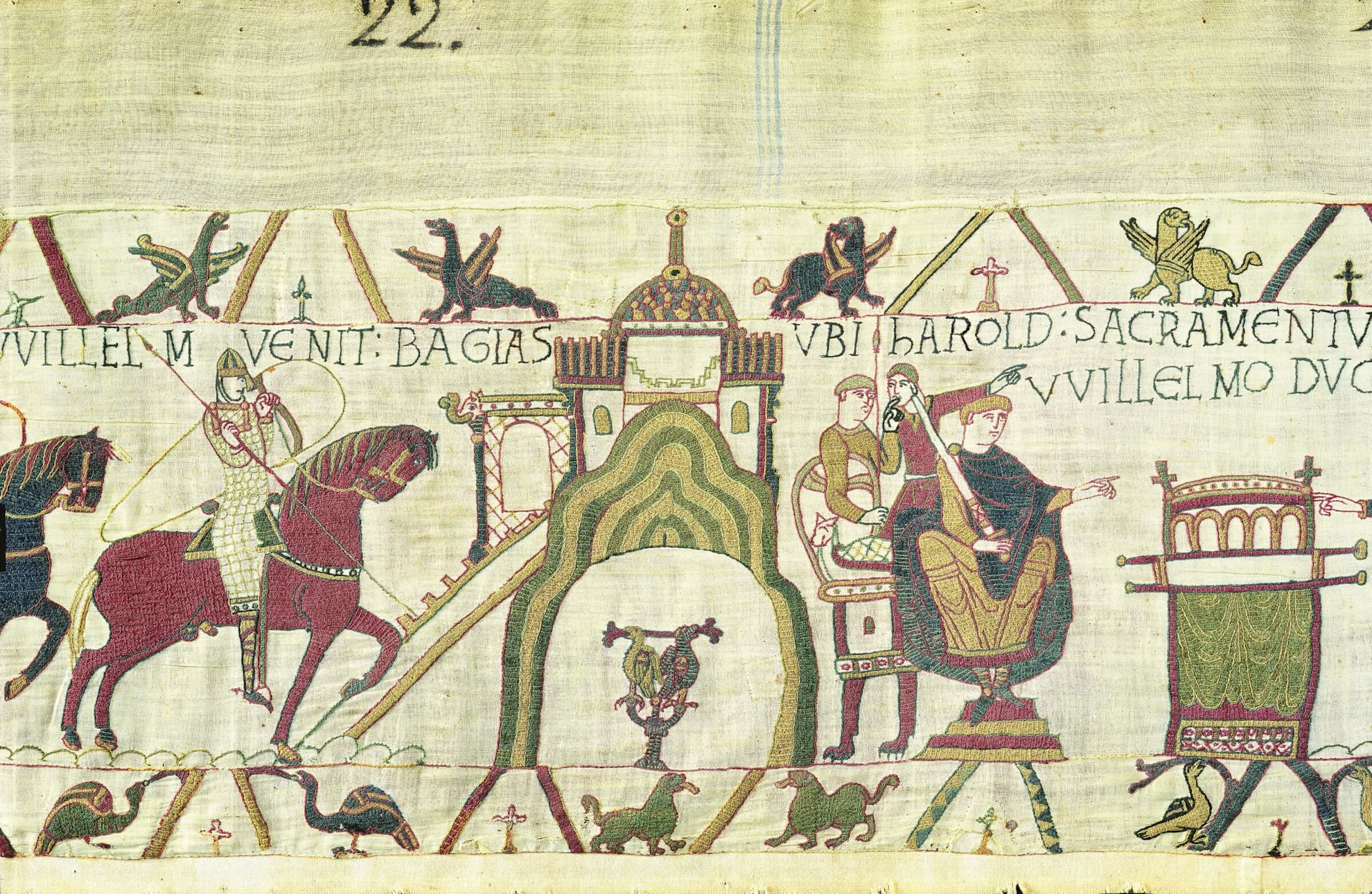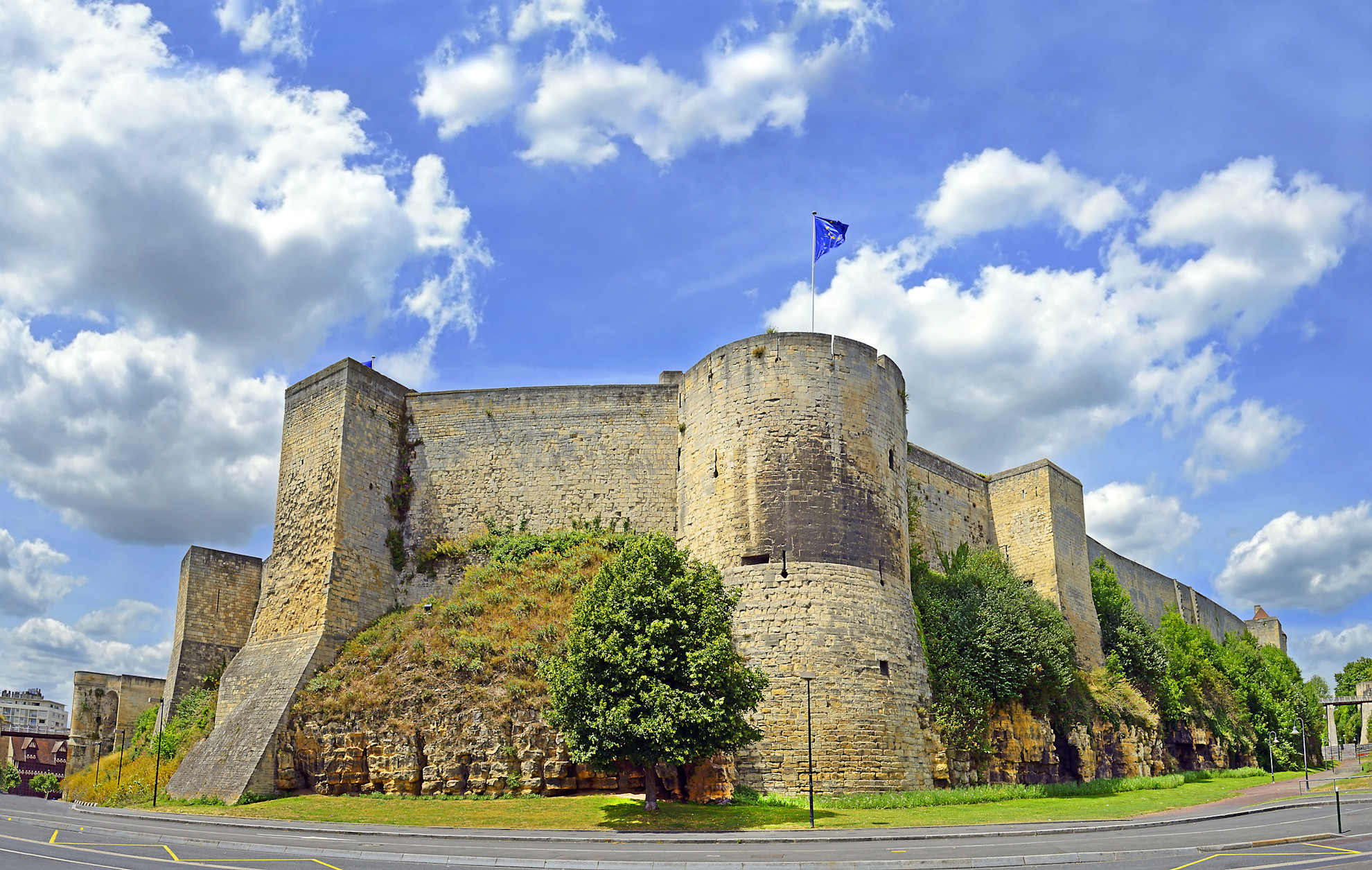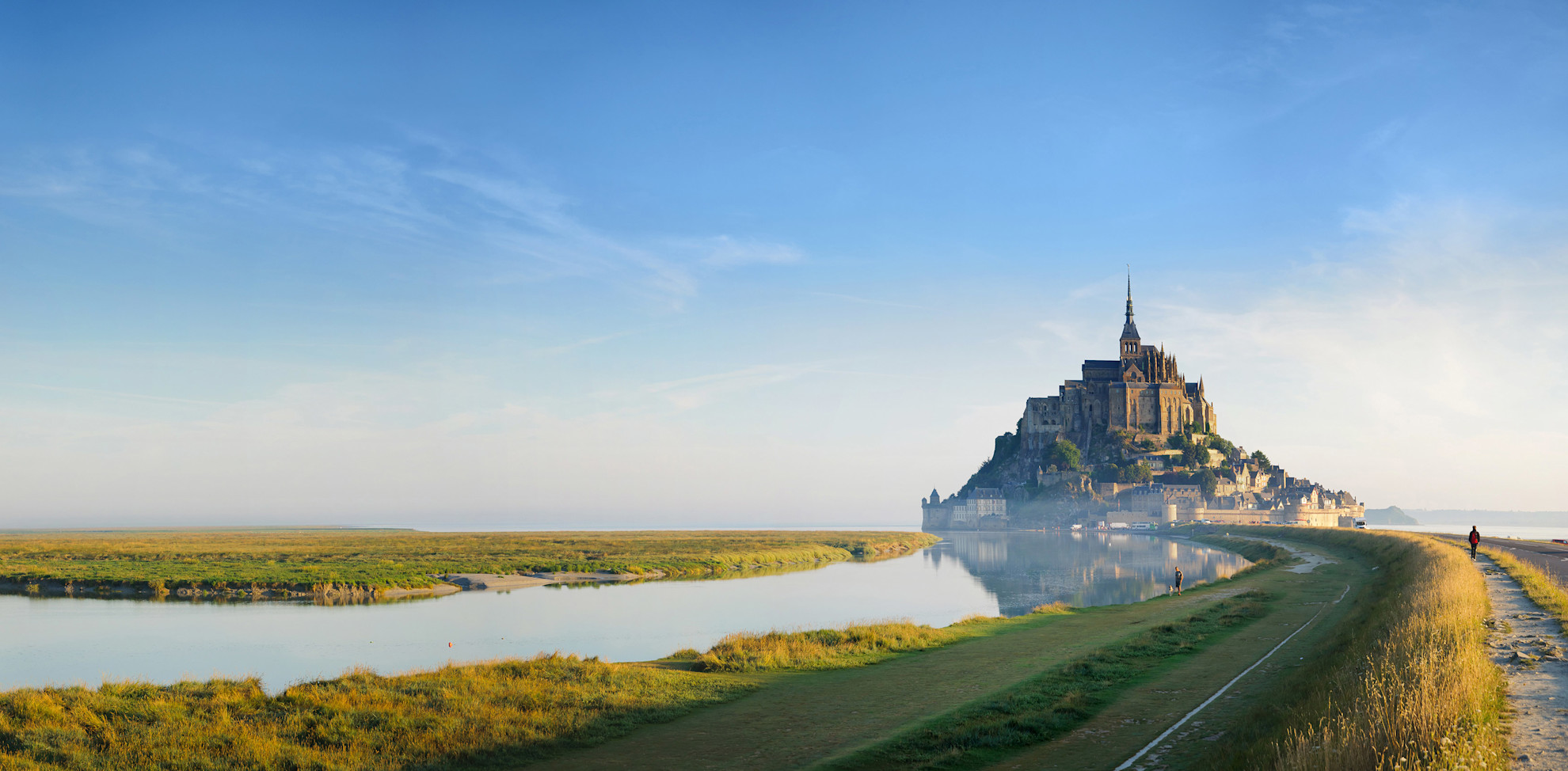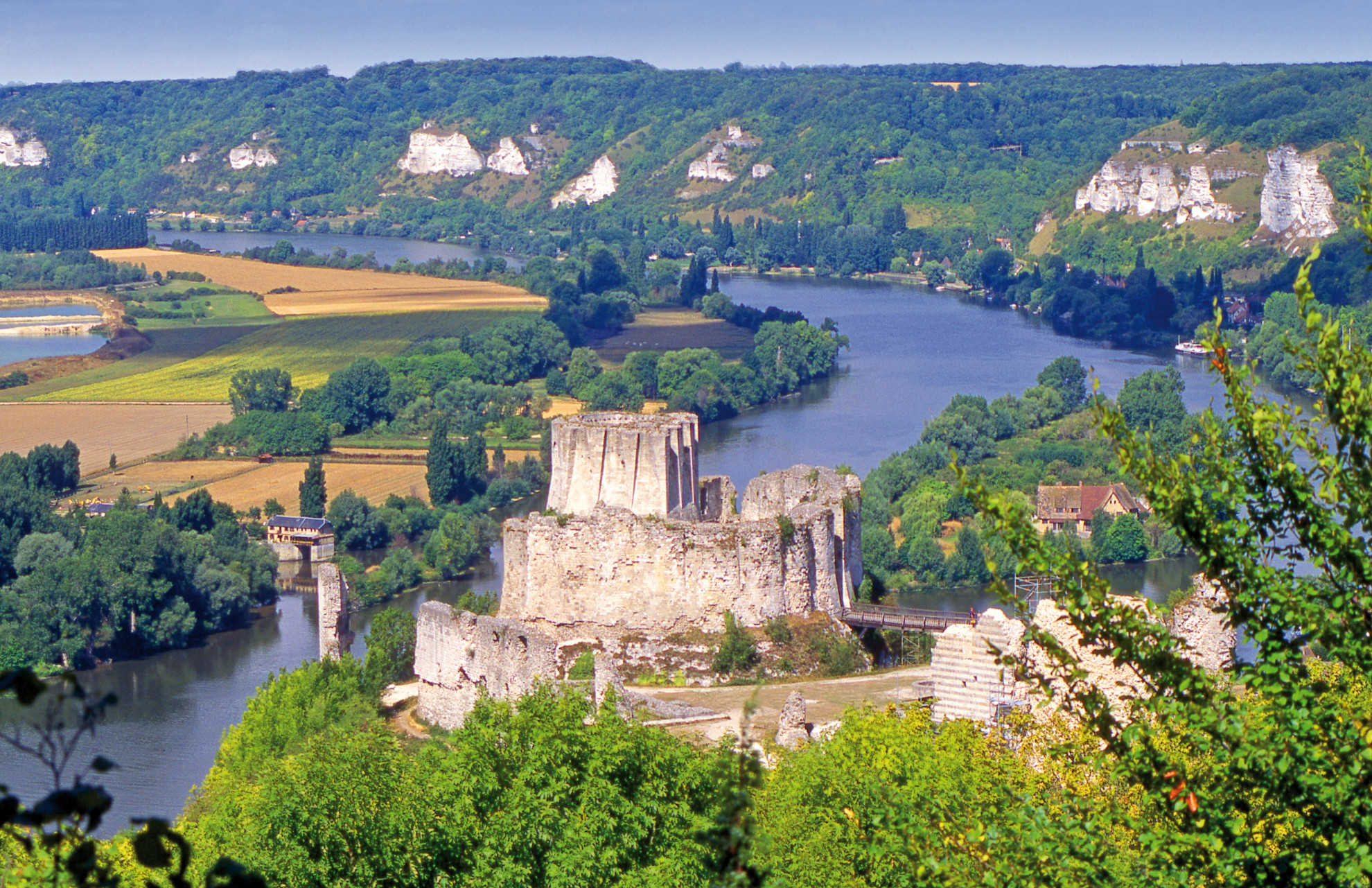FINDING MEDIEVAL NORMANDY

Medieval Normandy: The best towns to explore the history of William the Conqueror
France is full of a rich history from the D-Day sites of WW2 to medieval castles! But what are the sites that you should visit to appreciate Normandy's medieval heritage?
Born in Normandy, William the Conqueror became the King of England after he led the Norman Conquest and won the Battle of Hastings in 1066. Today, his legacy is preserved throughout Normandy in the incredible medieval sites and monuments that still exist.
So, if you have any history enthusiasts in the family, visiting these medieval sites on your next holiday to Normandy is a must…
The best medieval towns to visit in Normandy
1. The medieval town of Bayeux
The winding streets around Bayeux cathedral are a perfect example of a medieval Norman town. With many of the spectacular historic houses now converted into restaurants, you can enjoy the view of the magnificent cathedral with some delicious top-class cuisine.
Consecrated by William the Conqueror in 1077, the stunning Gothic cathedral dominates the skyline of Bayeux and was originally the home of the Bayeux Tapestry.
Of course, the main reason to come to Bayeux is to see the impressive 70 metres (230 feet) long Bayeux Tapestry.
The Bayeux tapestry
Not actually a tapestry at all (it's an embroidery), it is thought to have been commissioned by Bishop Odo following William's win at the Battle of Hastings and the Conquest of England and depicts these events in grand style.
On display in its own museum, it's the perfect way for all the family to discover an important part of the past - there's even a 16 minute film about the events depicted in the tapestry.
2. The medieval town of Caen
A key stronghold for William the Conqueror and the administrative seat of his Duchy, Caen shows the might of William's reign more than anywhere else in Normandy. There are three impressive structures still standing today - the Château de Caen, the Abbaye aux Hommes and the Abbaye aux Dames.
Looming over the town from atop the hill, the fortress of the Château de Caen is an incredible work of military architecture and one of the best-preserved medieval castles in all of Europe. Today, it is home to three museums - the Museum of Normandy, a Fine Arts museum and a showcase for temporary exhibitions.
Chateau de Caen
The two medieval abbeys in the city were built by William and his wife, Mathilda, as a penance to the Church after they married without the Church's blessing. William's striking Abbaye aux Hommes is a famed work of Gothic architecture, and the town hall now resides in the attached monastic building.
Across town, Mathilda's Abbaye aux Dames was a convent of Benedictine nuns that was renowned from the day it was built until the French Revolution. Mathilda herself is buried in the heart of the church and there is a tomb for William the Conqueror inside the Abbaye aux Hommes.
3. Château Guillaume le Conquérant
Located in Falaise, the birthplace of William the Conqueror, the restored Château Guillame le Conquérant showcases Norman power in the Middle Ages.
Built by the Duke of Normandy from 1027 to 1035, the chateau was later William the Conqueror's home and was greatly expanded by his descendants in the 12th and 13th centuries.
There are various guided tours you can take around the castle which show off what life was like in medieval times there.
Chateau Guillaume le Conquerant at Falaise © Calvados Tourisme
4. Mont St Michel and Abbaye du Mont St Michel
One of the most remarkable sights in all of France, the tidal island of Mont St Michel in its beautiful bay is somewhere not to be missed when visiting Normandy.
A local bishop in the 8th century is said to have begun the construction of religious buildings on the island after he was visited by the Archangel Michael who ordered him to do so. It is a stunning natural site made even more awe-inspiring by the majestic abbey that gives it a striking silhouette against the skyline. The Mont even features in the Bayeux Tapestry and was a popular religious pilgrimage destination throughout the Middle Ages.
Wander through the medieval cobbled streets of the town, lined with souvenir shops, crêperies and restaurants where historic buildings reach out above you.
There are over 900 steps to reach the abbey at the top, which is an incredible architectural achievement in itself. Many underground crypts and chapels were built to support the weight of the abbey at the top of the Mont, making an extraordinary and graceful supporting structure.
This is one of the most spectacular places to visit on a holiday to France, especially for those with an interest in medieval history.
UNESCO world heritage site, Mont St Michel
5. Château d'Harcourt
Dating from the 12th century, the Château d'Harcourt is a wonderfully preserved work of medieval defensive architecture. With a double moat, fortified courtyard and imposing circular towers beside the gate, it is a formidable proposition to any enemy.
A key defensive point in the 14th century, by the 17th its use was more residential and the eastern side of the chateau leans towards a more classical architectural style.
On the doorstep is one of the largest, and also the oldest, arboretum in France. Planted in 1802, the arboretum is home to over 500 tree species including some trees that are between 150 to 200 years old and stand over 40 metres tall.
6. The medieval city of Rouen and its cathedral
A bustling city in the Middle Ages as it is today, Rouen was popular with the Anglo-French kings and William the Conqueror himself often held court here. The city has kept many important historic buildings, especially the instantly recognisable half-timber houses that predominated in the era.
Rouen is known as the city of spires for all its churches but it is the cathedral containing the tomb of William the Conqueror's ancestor, the equally renowned Richard the Lionheart, that is most famous.
Rouen at sunset with the silhouette of the cathedral overlooking the Seine
If you enjoy Impressionist art then you'll recognise the cathedral as a favourite study of Monet's - he crafted a whole series of paintings of it in different lights and at different times of the year.
Having taken several centuries to build, the cathedral showcases the development of the Gothic style and is an awe-inspiring achievement. Later in medieval times, the city was also known as the place where Joan of Arc was tried and executed.
If you're curious about Joan of Arc then head to the Historial Jeanne d'Arc, an interactive and multimedia experience, to uncover the truth about this French heroine as well as her legend.
7. Jumièges Abbey
The ruins at the abbey of Jumièges are the remains of one of the oldest monasteries in the western world. Situated beside the river Seine, it is in a tranquil and picturesque setting, not far from Rouen.
An abbey has existed on this spot since the middle of the 7th century, but this was destroyed by Viking invaders and the current structure dates from the 11th century.
Consecrated by William the Conqueror in 1067, the abbey became widely respected as a place of learning in medieval times. After the Wars of Religion in the 16th century, the abbey was looted and damaged by Protestants and large amounts of the stone were sold off during the Revolution, leaving behind the ruins we see today.
8. Château Gaillard
Constructed in record time by medieval builders, in just two years, the Château Gaillard was ordered by Richard the Lionheart in the 12th century to protect the kingdom of Normandy from the invading French.
Château Gaillard
Despite its advanced design and location in a prime position overlooking the River Seine, the castle fell to the French in 1204 after a siege over several months.
After Normandy became part of France, the castle switched hands between the French and the English several times during the Hundred Years' War. It eventually fell into disrepair, subsequently being partly demolished to reuse the stone.
Today, you can visit the ruins including the inner and outer baileys and enjoy the beautiful surrounding countryside, which is nationally protected.
Say ‘Oui’ to a 2023 holiday with Brittany Ferries 澳洲幸运10十168体彩开奖网! When you travel with us, France and Spain come to life the moment you step on board. With space to relax and unwind in our bars, restaurants and out on deck, our ships showcase why travelling by sea is a richer way to travel.
Samantha Wills







